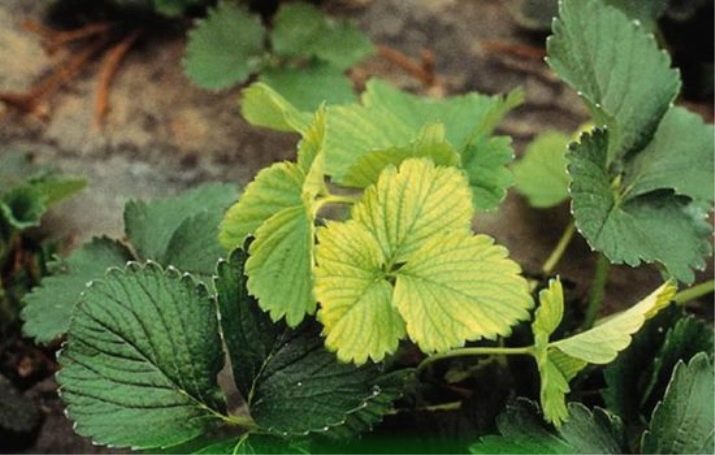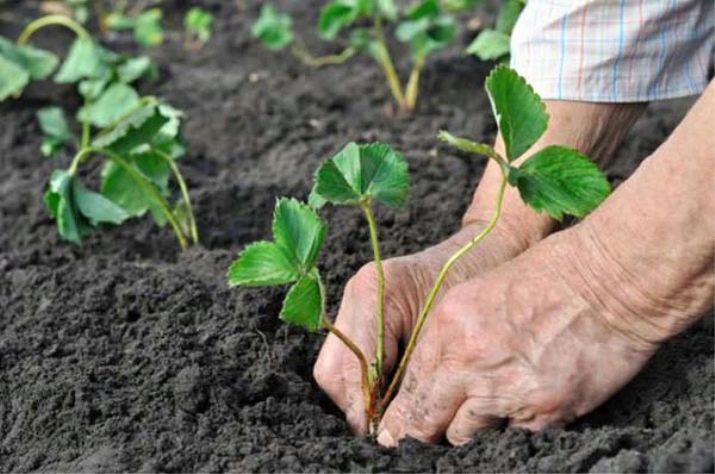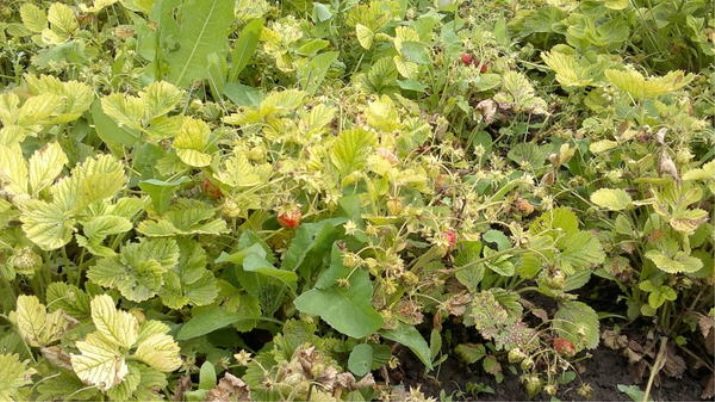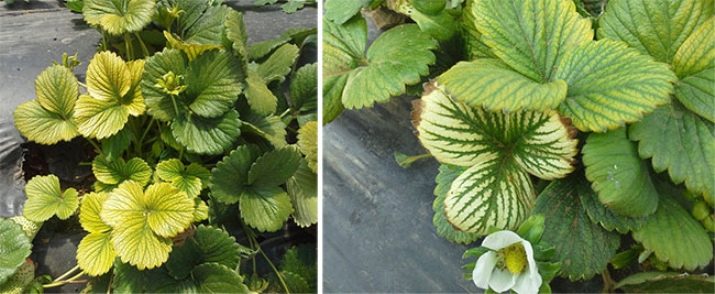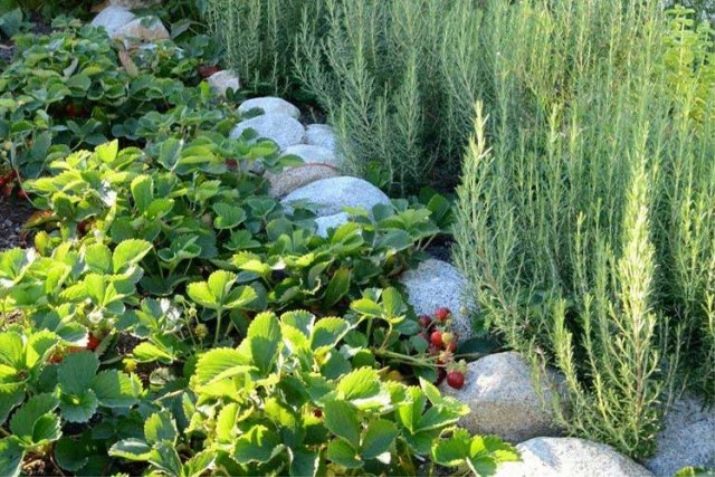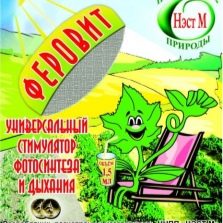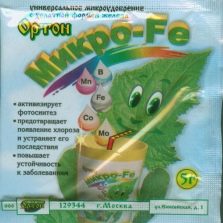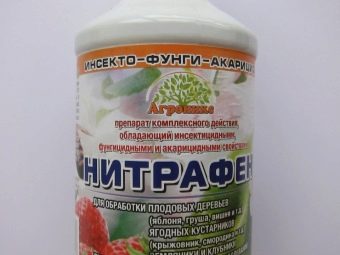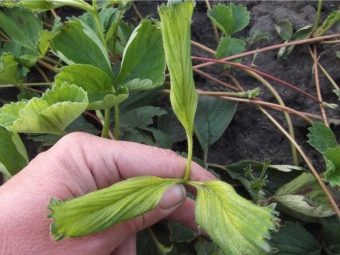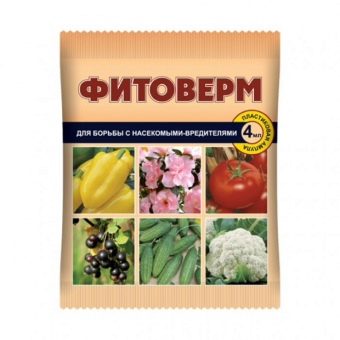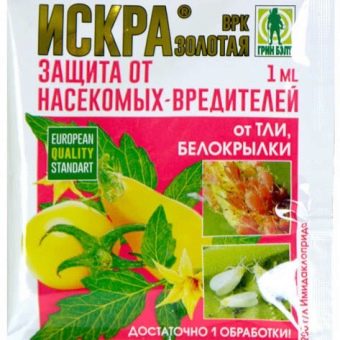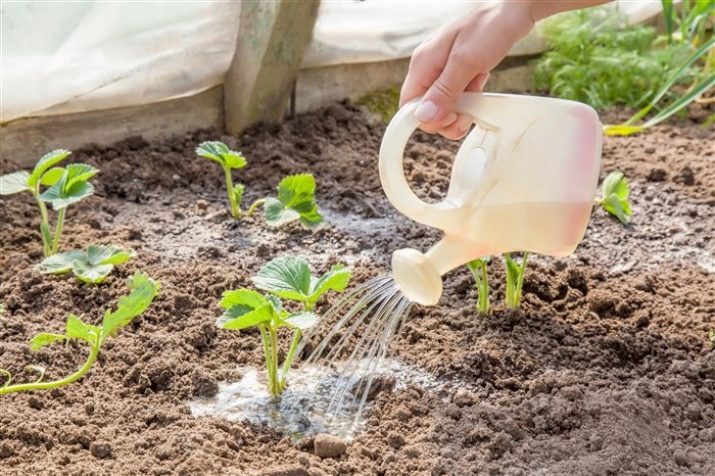Why do strawberry leaves turn yellow and how to deal with this phenomenon?
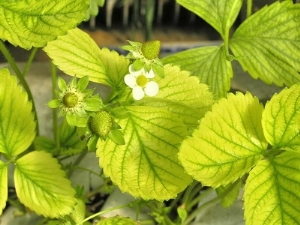
Many summer residents came across the yellowing of leaves in strawberries. This phenomenon is called chlorosis and is quite common.The reasons for this process are many factors, paying attention to them and not allowing a number of errors, you can correct the situation and continue to prevent its recurrence.
What are the reasons?
The reasons for the yellowing of leaves in strawberries, quite a lot. Sometimes several factors overlap and give an unpleasant effect. Therefore, to understand the true state of affairs is not easy, not only for beginners, but also for quite experienced summer residents. The source of the problem is usually a number of factors.
- Agricultural engineering errors.
- One of the most common mistakes novice gardeners is the wrong location of the beds on the site. Many gardeners often seek to place the plantation in the sun. To do this is absolutely impossible.
- In addition to the location, the timing of strawberry seedlings in open ground is often violated. The ideal landing time is the second half of July. During the time remaining until the winter cold, the young plant will have time to get stronger and enter the winter in optimal condition.
With a later planting, the shoots do not have time to gain strength, hibernate in a weakened form, so the next season they begin to turn yellow and wither.
- The surrounding plants also affect the condition of the strawberry leaf. Thus, when raspberries and tulips grow together, there is a risk of the appearance of a raspberry-strawberry weevil, the appearance of which also leads to a deterioration of the leaves. In addition, the culture can not be planted in areas where it grew up solanaceous and Compositae. And the soil, where earlier the cereals grew and there were beds with radishes, garlic and parsley, on the contrary, is very favorable for strawberries. Another reason for the appearance of yellowness is too close placement of bushes to each other. With this arrangement, the plants lack nutrients and space, which is why they begin to compete with each other for resources. As a result, weaker shoots begin to turn yellow and wither.
- The lack of trace elements. Magnesium hunger is the most common cause of leaf yellowing, due to the fact that magnesium is involved in photosynthesis and is contained in chlorophyll. Especially from the shortage of magnesium shrubs that grow on highly acidic and infertile soils suffer. The lower leaves of such plants become yellow, brown and even purple, dry and eventually die.
Nitrogen and iron are also important for plants, with their lack of leaves become bright yellow and sometimes lemon color.
- Diseases. The defeat of non-infectious chlorosis also leads to yellowing of the green mass. The disease appears for the following reasons: in the spring months in the cold earth the roots of plants absorb moisture and nutrients poorly, because of this, the leaves do not receive the trace elements they need and turn yellow. No less common is infectious xanthosis. The disease also manifests itself in the yellowing of the leaves and is carried by aphids, which lay eggs in the soil in the summer and infect it. In addition, the aphid is a carrier of another disease - marginal yellowing, in which not the whole leaf is affected by yellowness, but only its edge. As a result of this ailment, there is a general grinding of the bushes and their pressing to the ground.
- Poor watering. Lack of moisture also leads to yellowing of the leaves. However, the main thing in this business is not to overdo it. Abundant watering can lead to loss of taste, the appearance of watery fruits and cause fungal diseases.
- Pests. The yellowness of the leaves is often caused by the detrimental effects of the May beetle, the raspberry-strawberry weevil, penicle bib, and spider mite.
What to do with it?
For each of the causes of yellow leaf cover There are ways to fight.
- Protecting plants from excessive sun will help the right choice of place when forming strawberry beds. Plantations should be located in such a way that during the daylight hours the plants stay both in the sun and in the shade. To do this, select areas near a low shrub or tall flowers that can create light shading for strawberry bushes.
- With a shortage of minerals can be dealt with by regular fertilizing and interseasonal fertilization of the soil. Lack of magnesium it is replenished due to radical treatment of bushes with a composition prepared from 15 g of magnesium sulfate and 10 liters of water. Plants should receive at least two magnesium supplements with an interval of 7 days. Nitrogen deficiency is easily eliminated if strawberries are processed with ammonium nitrate, 25 g of which should be diluted in 10 liters of water.
In addition to the high nitrogen content, ammonium nitrate contains ammonia, which repels many pests from the plant, including the main enemy of deciduous crops, the cockchafer.
- Boron deficiency It is also a cause of yellowness and is treated by foliar application of a solution of boric acid. To prepare such a composition, it is enough to mix 30 drops of iodine, one teaspoon of boric acid and a glass of ash with ten liters of cool water. Some summer residents use a different composition consisting of 3 g of potassium permanganate, half a teaspoon of boric acid, one tablespoon of urea, half a glass wood ash and ten liters of water.
- Iron deficiency also negatively affects the state of leaf cover and is eliminated by introducing Ferrovit, Ferrilene, Micro-Fe and the like. In addition, it is necessary to closely monitor the level of acidity of the soil. Ideal for strawberries is considered a pH of 6-6.5 units. Such soils are considered slightly acidic and are the best suited for growing strawberries.
- Infectious and non-infectious leaf diseases they are treated with the help of both folk remedies and finished products, namely:
- in case of non-infectious chlorosis, it is enough to water the plants with warm water and from time to time to spray with iron-containing compounds;
- xanthosis is a more serious disease and is rather poorly treated; sometimes it is more expedient to remove and burn diseased plants than to cure them; The main carrier of this disease is aphids, whose eggs remain in the ground for a long time and infect new plants. To destroy eggs and adults of aphids, strawberry bushes should be sprayed with a 1.5% Nitrafen solution, and treatment should be stopped a month before the first harvest.
- The lack of moisture that causes yellowing of the green mass is eliminated by regular watering. It is recommended to water the culture early in the morning. This requirement is due to the fact that before the onset of a night-time lowering of temperatures, the soil surface should have time to dry. The average water consumption for irrigation of one square meter of plantation is 10–12 l. To prevent intense evaporation and preserve moisture in the root zone, the soil around the bushes should be mulched using mowed grass, sawdust or straw.
- Pest control is also an important measure to prevent the appearance of yellowness. The best option for the destruction of insects is the treatment of plants "Fytoverm" - a biological tool that effectively destroys pests and does not harm the plants themselves. The drug is applied by spraying, the first of which is performed in June just before flowering. The second and third treatments are made at intervals of 14 days. Three treatments are usually enough to ensure that the plant is free from parasites. To achieve a better result, biological agents should alternate with chemical ones, such as Iskra and Fitoverm.
During the fruiting period, chemical treatment is not carried out, and after the last harvest, the bushes are treated with a soap solution with the addition of vegetable oil, garlic infusion and tobacco dust.
Prevention and proper care
Preventive measures taken in time will help not only to avoid yellowing of the leaves, but also eliminate the need to take emergency measures. So, to prevent sunburn, care must be taken to create scattering screens, which can be growing plants or man-made structures in the neighborhood. Watering plants should be warm water. The ideal option would be the organization of a drip irrigation system. As a preventive measure, before planting a crop on a bed, it is necessary to introduce humus and nitrogen fertilizers into the soil, which will lead to the normalization and balance of the soil composition and will not require the urgent application of additional fertilizing during crop growth.
Preventive soil disinfection in the spring will not interfere either. To do this, usually use a weak solution of potassium permanganate, which kills most pathogenic bacteria. To prepare it, you need to dilute 5 grams of the substance in ten liters of warm water. And the use of the same solution, but boiled water heated to the state, will help to cope not only with bacteria, but also completely exterminate the worst strawberry-strawberry enemies - pen-tingling and spider mite. As well as preventing the appearance of pests, it is possible to populate the site with predatory insects: ladybirds, hoverlings and ground beetles.
Thus, the yellowed leaves of strawberries are not a sentence to the plant. To deal with this anomaly can and should be. This requires only strict adherence to the rules of agrotechnology, the timely introduction of fertilizing, monitoring the state of the soil and preventing the appearance of insect pests. Compliance with these rules and the timely implementation of preventive measures will completely eliminate or minimize the risk of yellowing of the leaves, as well as ensure a rich harvest.
You will learn more about the proper care for strawberries in the following video.

